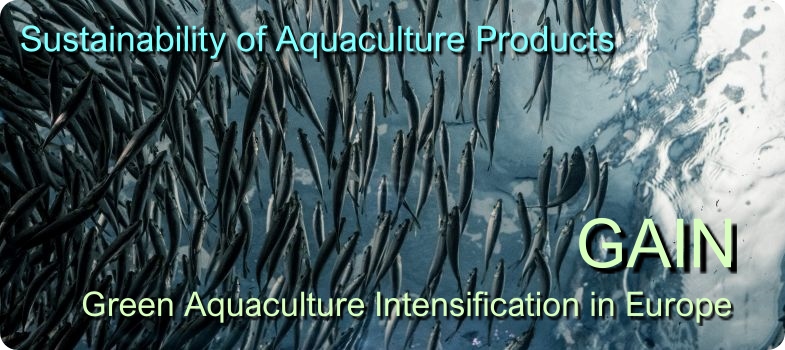Improving Sustainability in aquaculture
A number of steps can be made to improve environmental sustainability. The majority of global supply chain impacts are associated with the use of feed so better feed and stock management is key. Feed efficiency can be improved by ensuring that the right nutrition is provided to stock at the right time, which involves careful management. Improvements have been made as automation improves and a better understanding of stock requirements is gained. Precision aquaculture has allowed managers to assess stock status better and is also facilitating management decisions such as stock movements, grading, harvesting and other important decisions that could affect efficiency. Precision aquaculture may also allow better assessment of stock health, preventing disease and mortality. Disease can affect growth as well as feed efficiency.
Feed management goes hand in hand with feed composition. While substituting different feed ingredients may improve feed efficiency at the local level, there could be trade-offs around global emissions. For, example some highly processed ingredients can make modest improvements to feed efficiency but with higher energy requirements in their production and therefore higher carbon footprints. Some novel feed ingredients have very high energy and water demands above traditional ingredients so potentially, there are significant trade-offs with these ingredients between different points in the value chain and between different types of impact. Continued advances in nutrition are likely to be made but need sustainability assessments that go beyond farm performance. Advances in welfare, genetics and stock selection also have the potential to improve the efficiency of feed conversion.
Local impacts may be more difficult to reduce at the same time as local impacts. The most effective way to reduce or stop local impacts is to use closed systems that prevent any interaction with the local environment, including benthic deposition, disease transfer, eutrophication, genetic pollution/ invasive species introduction and competition. Closed systems may be more practical for some species than others. For shrimp (Penaeid spp.), closed systems have been operated for many years, mostly to protect the stock from disease. The approach is ideal for the intensification of shrimp production that routinely suffers major disease outbreaks but such systems require high levels of capital investment and expertise to operate and are more energy-intensive than traditional systems. However, the reduction in mortality and disease can result in overall efficiency gains. For other species that are not so susceptible to disease, the efficiency gains are less apparent and the Energy Return On Investment (EROI) may be reduced. There is significant interest in producing salmon smolts in Recirculating Aquaculture Systems (RAS), especially to a larger size that is more resilient when they are sent to the sea and there is also some momentum in producing more salmon to market size in these systems too, in an effort to reduce interactions with wild salmon populations and any negative effects such interactions may have. Protection of the stock from outside pressures is the main motivation, particularly for juveniles.
